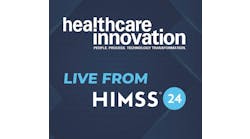The Office of the National Coordinator for Health IT’s draft strategy to ease clinician burdens by trying to harmonize public health data reporting requirements drew enthusiastic response. Commenting online, many health system executives gave examples of just how onerous the process currently is. They suggested that ONC look for opportunities where federal, state and local programs could collaborate on these burden-reducing efforts.
ONC received 208 written comments on the draft Strategy on Reducing Regulatory and Administrative Burden Relating to the Use of Health IT and EHRs during the public commenting period. The draft strategy focused on four areas, one of which was public health reporting.
In its comments, the American College of Physicians (ACP) noted that when public health agencies require data from practices and hospitals, they usually require that the data elements be defined, structured and formatted differently from the way the data are collected during the delivery of clinical care. “This means that the reporting clinicians assume the burden, having to manipulate the data in ways that decrease the accuracy and value of the data elements.”
Instead of requiring clinicians to restructure the data to meet the reporting need, public health authorities should present clinicians and healthcare delivery organizations with a single target for all data reporting, ACP suggested. “This could be delivered as a single national portal/registry or 13 local/regional entities such as health information exchanges (HIEs) that all support common data and process standards for all reporting by providers and data query/collection by public health authorities. Rather than requiring EHRs and other clinical health IT to support multiple separate standards for extracting data for quality, public health, research, payment, administrative, and other reporting purposes, ONC should commission development of a single API for all of the query and data extraction requirements.”
Joe Kimura, M.D., chief medical officer for Massachusetts-based Atrius Health, noted that the biggest gaps appear to emerge at the interface between federal and state programs. He added that in Massachusetts, local efforts in support of public health reporting such as implementation of a bidirectional immunization interface or connection with the Prescription Drug Monitoring Program (PDMP) database have been far from straightforward. “Our experience with setting up technical interfaces for these programs has required months of effort and significant education on both sides,” he wrote. “Atrius Health suggests that to the extent that states have discretion in implementing federal programs, that standards are developed concurrently or even in advance of the mandate through early engagement of EHR vendors and providers so as to reduce the administrative burden associated with implementing the reporting requirement.”
Writing for 39-hospital Dignity Health, Sandy Summers, director of EHR incentive reporting and Thomas Peppard, director of the MIPS program in clinical informatics, noted that the variation across jurisdictions in terms of ability to receive data is a challenge. Dignity Health suggested that HHS work to support states in developing their capability to receive data and adhere to the technical standards included in certified EHRs. This standardization should be extended to all categories of public health reporting, including immunizations and syndromic surveillance reporting.
Dignity Health also urged HHS to recognize the need to better standardize and connect PDMPs across state lines. Although Dignity strongly supports the intent to use the health IT infrastructure to provide insight on Schedule II opioid prescribing practices, it noted that in addition to variation across states, PDMPs are generally not easily integrated into EHRs, and access fees can be high. “Dignity Health urges ONC to work with PDMPs to improve integration into EHRs and sharing of data across states. ONC should consider the use of an open, standard API by PDMPs to enable a provider’s EHR to access the Schedule II opioid prescription drug history of a patient.”
Oregon-based OCHIN, which provides health IT infrastructure for community health centers nationwide, encourages the national adoption of RxNorm codes for medication reporting, to be integrated into all state prescription drug monitoring programs (PDMPs) to increase interoperability and usability. “Ideally, all PDMPs would be connected to the U.S. Department of Justice RxCheck Interstate Hub to allow for national queries for each patient. The eHealth Exchange provides a sufficient platform to facilitate the integration of PDMPs into the EHR, increasing their use by reducing the additional steps required of physicians to access prescription information.”
Writing for Kaiser Permanente, Jamie Ferguson, vice president for health IT strategy and policy, recommended that HHS should convene key stakeholders, including state public health departments and community health centers, to inventory reporting requirements from federally funded public health programs that rely on EHR data. “Based on that inventory, relevant federal agencies should work together to identify common data reported to relevant state health departments and federal program-specific reporting platforms,” Ferguson wrote. He gave this example: to measure opioid overuse, the Pharmacy Quality Alliance (PQA) has a metric that sets a 90-milligram morphine equivalent dose (MME) cut-point; NCQA and HEDIS specify a similar metric with 120 MME as the cut-point; Kaiser has internal programs that use a 90 MME cut-point. “Standardizing the metric and the cut-point would reduce confusion and duplicative reporting, while also improving the ability to compare the metric across multiple organizations.”
Scott Becker, executive director of the Association of Public Health Laboratories, noted that public health is working with HL7 to try to coordinate reporting tools and infrastructure. “Programs like the Da Vinci healthcare payer project and government quality reporting can be brought together with public health to use common EHR reporting approaches and tools. Moving forward, automated interface development is quite possible under the HL7 FHIR API standards and would further reduce EHR vendor effort if supported.”
Becker stressed that public health is also working hard to be sensitive to the EHR vendor challenges of jurisdictional variability. “Immunization information systems have made tremendous progress in making standardizing interoperability requirements, facilitating both submission of data and query of the consolidated record at the point of care. The electronic Case Reporting “all condition, all jurisdiction” HL7 eCR standards and the Council of State and Territorial Epidemiologists (CSTE) and Centers for Disease Control and Prevention (CDC) Reportable Condition Knowledge Management System (RCKMS) can help eliminate all EHR vendor challenges of State and Local variability for case reporting – if they are consistently advanced.”


